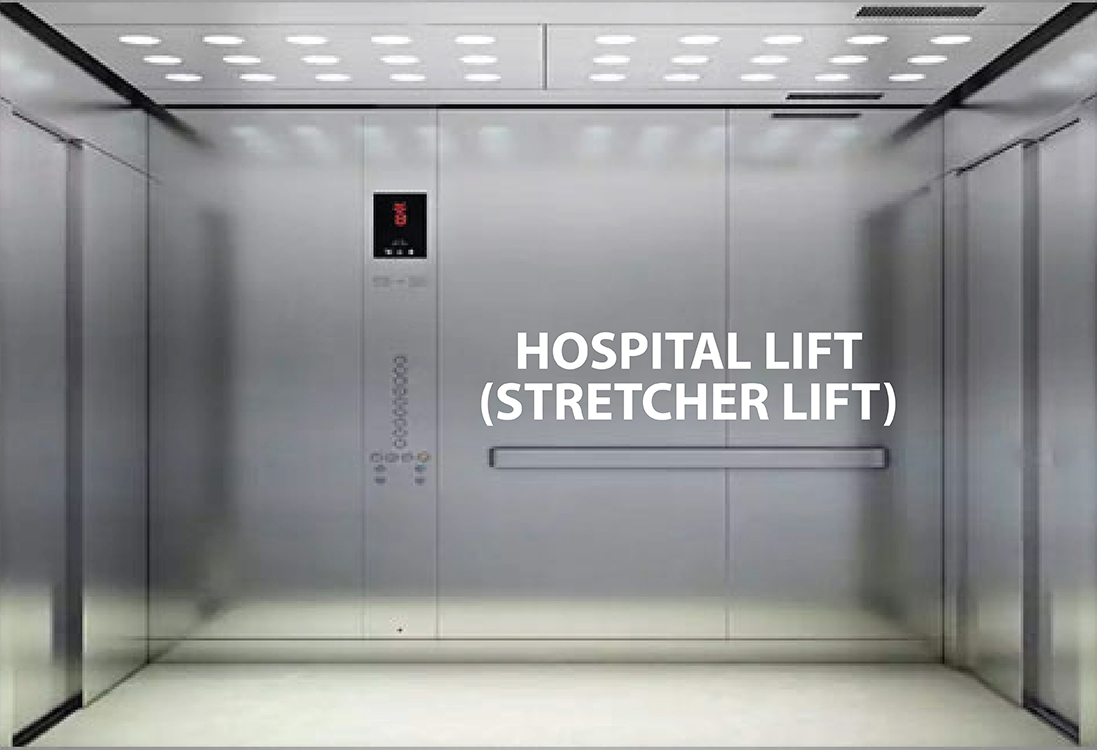What is a hospital lift and what are its major features?

This is fairly a subject that is related to everyone though nobody desires to go to the hospital. Almost everyone has been to the hospital for treatment of his kin or his treatment. Many have been there just to learn about the well being of their next of kin or friend.
Why do you require a lift in a hospital?
In this era of fast-paced life, hospital bed and stretcher lift increase mobility. A hospital elevator is an ideal solution for the secure movement of patients, their kin, patient beds, stretcher, medical equipment, doctors, and nurses. Hospitals are places that are subject to a lot of mobility. Lots of patients move from one specialist department to another, whereas medical equipment and tools are shifted from one place to another. Taking into account all these factors, lifts are a must there. Gone are the days, when three-four people were seen pushing a stretcher.
All multistory hospitals have lifts in their building. Their load capacity and dimension may vary from hospital to hospital and company to company. More or less, their objective remains the same, increase mobility and supply medical equipment from one place to another.
Trauma center
Besides, a lift at a hospital also acts as a life savior. A few of you might have heard about a trauma center. Specialist hospitals have separate buildings and premises to look after patients suffering from serious injuries occurring through falls, motor vehicle collisions, gunshot wounds, fire, etc. In such a scenario, a lift serves as a savior. Every second matters, every moment counts as the patient’s life is in danger. A lift promptly rushes the patient to the right department wherein expert doctors look into the illnesses.
That’s why a lift of a hospital must work seamlessly! Considering the significance of the machine, hospitals have a separate department that looks after the maintenance of machines.
Types of lifts based on load capacity
Load capacity depends on patient inflow at your hospital. Just for the sake of showoff, don’t procure an alleviator. Consider various parameters, before making the final decision. An expert lift engineer of a company could be of great help in this regard. There’s no harm in taking expert advice.
Here is a standard load capacity of a few lifts:
S.No | Max Persons Permitted | Load Capacity/ Medical Equipment/ Stretcher |
1. | 13 | 884 kgs |
2. | 15 | 1020 kgs |
3. | 20 | 1360 kgs |
4. | 26 | 1768 kgs |
Characteristics of a hospital lift
Space and efficiency
In a hospital, there are a few things that are always on a priority list. Let’s understand through a few examples. Transfer of a serious patient from one ward to another, ICU machine from one floor to another, movement of food trolley and oxygen gases, etc. need immediate attention. A lapse of time could be disastrous. Therefore, the lift should be efficient with ample space.
Minimal noise
The hospital bed and stretcher lift are designed keeping in view patients’ and hospital’s requirements. Minimal noise is expected as tranquility improves health. A noisy environment is harmful to the patient. Sudden movements and jerks shouldn’t be there as such things could cause harm to the patient.
Safety tests
Essential tests and safety measures should be carried out on regular basis. Fire protection systems, emergency lights, alarm buttons, phones, etc. should be checked and tested on regular basis. Any security issue, if detected should be addressed immediately, without delay, as it’s concerned with the safety of the patient.
Choose the ideal lift
A lift for a hospital serves as a lifeline. Therefore, it’s pertinent to choose an ideal lift. Never compromise on quality!
Recent Posts
Categories
- Accessories (7)
- Blog (49)
- Elevator Cabin (1)
- Elevator Door Frame (2)
- Glass Capsule Lift (3)
- Goods Lift (2)
- Hospital (3)
- Industrial Elevators (1)
- MRL lift (1)
- Residential Lift (8)









